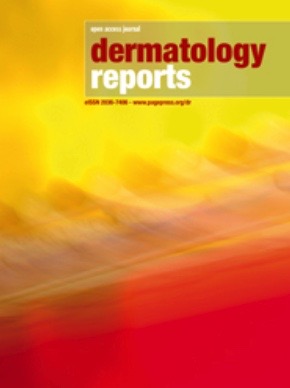Analysis of the 2025 Retiree Health Care Cost Estimate and its Alignment with Sustainable Development Goals
Introduction
A 2025 report from Fidelity Investments highlights the escalating financial burden of health care on retirees, a trend with significant implications for several United Nations Sustainable Development Goals (SDGs). The findings underscore the critical need for enhanced financial planning and accessible health care solutions to ensure the well-being and economic stability of aging populations, directly aligning with the principles of SDG 1 (No Poverty), SDG 3 (Good Health and Well-being), and SDG 10 (Reduced Inequalities).
Key Findings and Analysis
Escalating Health Care Costs: A Challenge to SDG 1 and SDG 3
The report’s central finding reveals a substantial increase in projected health care expenses for retirees, posing a direct threat to their financial security and access to care.
- Projected Cost: A 65-year-old individual retiring in 2025 is projected to require an average of $172,500 for health and medical expenses during their retirement.
- Annual Increase: This figure represents a more than 4% increase from the 2024 estimate, continuing a consistent upward trend since 2002.
- Scope of Estimate: The estimate includes costs associated with Medicare Parts A, B, and D, covering premiums and out-of-pocket expenses, but notably excludes the potentially significant costs of long-term care.
This continuous rise in costs directly challenges the achievement of SDG 1 (No Poverty) by increasing the risk of financial hardship for the elderly. Furthermore, it creates barriers to achieving SDG 3 (Good Health and Well-being), as prohibitive costs may deter retirees from seeking necessary medical treatment.
Gaps in Retirement Preparedness and the Impact on SDG 10
The report identifies a concerning lack of awareness and planning for retirement health care costs among the American population, revealing disparities that impact SDG 10 (Reduced Inequalities).
- Lack of Consideration: One in five Americans report having never considered their health care needs in retirement. This gap is more pronounced among Generation X, where the figure rises to one in four.
- Inaction on Planning: 17% of individuals across all generations have not taken any steps to plan for these future expenses.
- Decreased Confidence: These planning gaps coincide with a slight decrease in Americans’ confidence regarding their overall retirement prospects.
These statistics highlight an inequality in financial literacy and access to planning resources, which can lead to disparate health and economic outcomes among different demographic groups.
Strategic Tools for Sustainable Health and Financial Well-being
Health Savings Accounts (HSAs): A Vehicle for SDG 3
Health Savings Accounts (HSAs) are presented as a key instrument for mitigating future health care costs, thereby supporting the objectives of SDG 3 (Good Health and Well-being). The primary benefits include a triple-tax advantage, which allows for pre-tax contributions, tax-free withdrawals for qualified medical expenses, and tax-free growth from investments. However, utilization remains suboptimal.
- Adoption vs. Utilization: While Fidelity’s HSA assets grew by 43% in 2024, only 23% of Americans are actively using an HSA to prepare for retirement health costs.
- Investment Gap: A mere 30% of HSA holders are investing their assets, forgoing significant potential for tax-free growth.
- The Pre-Retiree Knowledge Gap: A critical finding related to SDG 10 (Reduced Inequalities) is the knowledge gap among those nearing retirement. Only 15% of individuals aged 55-64 have an HSA, and over half of them are unaware of its potential as a retirement savings vehicle.
Navigating Medicare: A Partnership for the Goals (SDG 17)
While Medicare is a foundational element of retiree health care, the report emphasizes that it does not eliminate out-of-pocket expenses. This reality underscores the importance of informed decision-making to support SDG 1 and SDG 3.
- Coverage Gaps: Retirees remain responsible for significant costs, including Medicare premiums, dental and vision care, and over-the-counter medications.
- Enrollment Complexity: A majority of Americans (55%) anticipate that enrolling in Medicare will be difficult, indicating a need for clear guidance and support.
Services that provide education and guidance on Medicare options function as a form of public-private partnership, aligning with SDG 17 (Partnerships for the Goals) by helping individuals navigate complex systems to secure their health and financial well-being.
Conclusion: Corporate Responsibility and Advancing the SDGs
The report concludes by highlighting resources designed to address these challenges. These initiatives reflect a corporate commitment to fostering financial wellness and health security, contributing to several SDGs.
Fidelity Resources Supporting Sustainable Outcomes
- Fidelity HSA®: By providing a tax-advantaged savings and investment tool, this service directly supports individuals in preparing for future health expenses, contributing to SDG 1 and SDG 3.
- Fidelity Medicare Services®: Offering impartial education helps reduce the complexity of health care choices, promoting SDG 3 and acting as a partnership in line with SDG 17.
- Fidelity Workplace Consulting: Assisting employers in managing health care costs and improving workforce health contributes to SDG 8 (Decent Work and Economic Growth) by fostering healthier, more financially secure work environments.
Analysis of Sustainable Development Goals in the Article
1. Which SDGs are addressed or connected to the issues highlighted in the article?
SDG 1: No Poverty
- The article highlights the significant financial burden of healthcare on retirees, with an estimated cost of $172,500. This substantial expense can deplete savings and push the elderly into financial hardship or poverty, directly connecting to the goal of eradicating poverty in all its forms.
SDG 3: Good Health and Well-being
- The entire article revolves around ensuring financial preparedness for healthcare costs in retirement. It discusses access to healthcare through Medicare and the importance of savings vehicles like HSAs to cover medical expenses, which is central to ensuring healthy lives and promoting well-being for all at all ages.
SDG 8: Decent Work and Economic Growth
- The article discusses financial instruments like Health Savings Accounts (HSAs) and the role of financial institutions (Fidelity) in strengthening the financial well-being of customers. This relates to promoting sustained, inclusive economic growth by encouraging financial planning and expanding access to financial services.
SDG 10: Reduced Inequalities
- The article points to a significant “HSA knowledge gap,” particularly among older Americans (ages 55-64). This disparity in financial literacy and access to savings tools creates inequality in retirement preparedness, which SDG 10 aims to reduce.
2. What specific targets under those SDGs can be identified based on the article’s content?
SDG 1: No Poverty
- Target 1.2: By 2030, reduce at least by half the proportion of men, women and children of all ages living in poverty in all its dimensions according to national definitions. The article’s focus on planning for the $172,500 in healthcare costs is a direct effort to prevent retirees from falling into poverty due to overwhelming medical expenses.
- Target 1.3: Implement nationally appropriate social protection systems and measures for all, including floors, and by 2030 achieve substantial coverage of the poor and the vulnerable. The article discusses Medicare as a social protection system but highlights its insufficiency in covering all costs, thereby emphasizing the need for supplemental measures like HSAs to achieve substantial financial protection for the elderly.
SDG 3: Good Health and Well-being
- Target 3.8: Achieve universal health coverage, including financial risk protection, access to quality essential health-care services and access to safe, effective, quality and affordable essential medicines and vaccines for all. The article directly addresses the challenge of financial risk protection by quantifying the out-of-pocket expenses retirees face even with Medicare, and it promotes HSAs as a tool to make healthcare more affordable.
SDG 8: Decent Work and Economic Growth
- Target 8.10: Strengthen the capacity of domestic financial institutions to encourage and expand access to banking, insurance and financial services for all. Fidelity’s role in providing HSAs, Medicare guidance, and workplace consulting, as described in the article, exemplifies a financial institution working to expand access to financial services that promote long-term economic security.
SDG 10: Reduced Inequalities
- Target 10.2: By 2030, empower and promote the social, economic and political inclusion of all, irrespective of age… The article identifies that “only 15% of people ages 55-64 have an HSA,” highlighting an age-based inequality. Efforts to provide education and tools to this demographic aim to promote their economic inclusion and financial security.
3. Are there any indicators mentioned or implied in the article that can be used to measure progress towards the identified targets?
Indicators for SDG 1 (No Poverty)
- Average retiree health care cost estimate: The article states a 65-year-old can expect to spend “$172,500 in health care and medical expenses.” Tracking this figure measures the financial burden on the elderly.
- Proportion of individuals without retirement health savings: The article notes that “1-in-5 Americans say they have never considered health care needs during retirement,” which serves as an indicator of vulnerability to poverty from health shocks.
Indicators for SDG 3 (Good Health and Well-being)
- Out-of-pocket health expenditure: The $172,500 estimate is a direct measure of out-of-pocket spending, indicating the level of financial risk protection.
- Barriers to accessing health coverage: The statistics that “55% anticipate it will be difficult to enroll in Medicare coverage, and half expect to be confused when selecting a plan” can be used as indicators of barriers to accessing health services.
Indicators for SDG 8 (Decent Work and Economic Growth)
- Growth in financial service accounts and assets: The article cites a “43% growth in total assets and 23% increase in accounts” for Fidelity HSAs, which measures the expansion of financial services.
- Uptake of financial planning tools: The finding that “only 23% of Americans say they are contributing to an HSA” indicates the level of engagement with financial services for health savings.
Indicators for SDG 10 (Reduced Inequalities)
- Proportion of specific age groups using financial tools: The statistic that “only 15% of people ages 55-64 have an HSA” is a clear indicator of age-based inequality in financial preparedness.
- Financial literacy levels among vulnerable groups: The fact that “more than half (52%)” of HSA holders aged 55-64 are “not aware that an HSA can be used as a retirement savings vehicle” measures the knowledge gap that contributes to inequality.
4. Table of SDGs, Targets, and Indicators
| SDGs | Targets | Indicators |
|---|---|---|
| SDG 1: No Poverty |
1.2: Reduce poverty in all its dimensions.
1.3: Implement social protection systems. |
|
| SDG 3: Good Health and Well-being | 3.8: Achieve universal health coverage, including financial risk protection. |
|
| SDG 8: Decent Work and Economic Growth | 8.10: Expand access to banking, insurance and financial services. |
|
| SDG 10: Reduced Inequalities | 10.2: Promote social and economic inclusion of all, irrespective of age. |
|
Source: newsroom.fidelity.com







